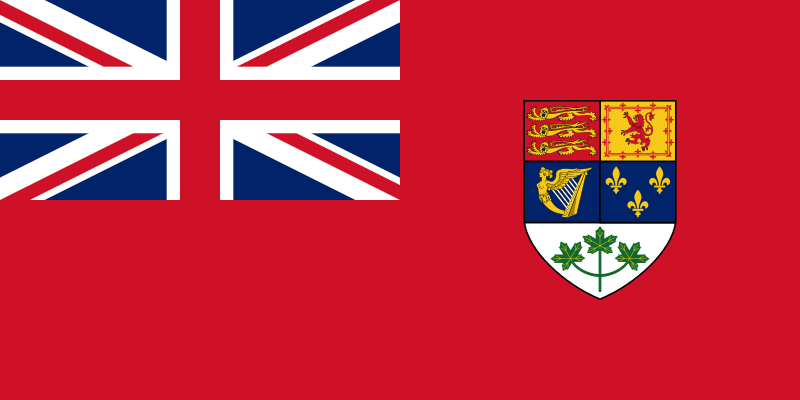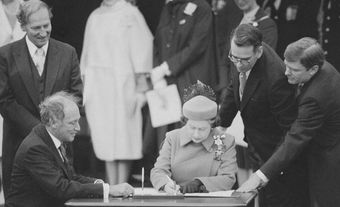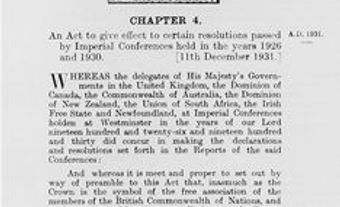The Statute of Westminster is a British law that was passed on 11 December 1931. It was Canada’s all-but-final achievement of independence from Britain. It enacted recommendations from the Balfour Report of 1926, which had declared that Britain and its Dominions were constitutionally “equal in status.” The Statute of Westminster gave Canada and the other Commonwealth Dominions legislative equality with Britain. They now had full legal freedom except in areas of their choosing. The Statute also clarified the powers of Canada’s Parliament and those of the other Dominions. (See also Editorial: The Statute of Westminster, Canada’s Declaration of Independence.)

Desire for Autonomy
Before 1931, the British government had certain ill-defined powers over legislation passed by the Commonwealth Dominions (Canada, Australia, New Zealand, South Africa, the Irish Free State, and Newfoundland). It also held overriding authority over those legislatures.
Things began to change after the First World War. The sacrifices of Canada and other Dominions on European battlefields had stirred feelings of nationhood and desires for greater autonomy.
Canada began to assert its independence in foreign policy in the early 1920s. In 1922, Prime Minister William Lyon Mackenzie King refused to help British occupation forces in Turkey without first getting the approval of Parliament. (See Chanak Affair.) In 1923, Canada signed a fisheries treaty with the United States without British involvement. (See Halibut Treaty.) In 1926, Canada established an embassy in Washington, DC. Vincent Massey was named its first Canadian minister (ambassador). This made him Canada’s first ever diplomatic envoy posted to a foreign capital. (See also Diplomatic and Consular Representations.)

Imperial Conferences
The Imperial Conference of 1926 was a more formal step. It gave legal substance to the Balfour Report from earlier that year. The report had declared that Britain and its Dominions were constitutionally “equal in status.” The work of changing the Commonwealth’s complex legal system continued at the 1929 Conference on the Operation of Dominion Legislation and the Imperial Conference of 1930. (See also Colonial and Imperial Conferences.)
Gradual Change
On 11 December 1931, the Statute of Westminster was passed by the British Parliament. This was done at the request and with the consent of the Dominions. This further clarified and cemented the Dominions’ legislative independence.
Yet some limits remained. Canada’s federal and provincial governments could not agree on how they would make future changes to the British North America Act (now called the Constitution Act, 1867). As a result, the British parliament was asked to retain the power to amend Canada’s Constitution until Canadians could come up with their own way of doing so. The power to amend the Constitution remained with the British Parliament until passage of the Constitution Act, 1982. (See Patriation of the Constitution.)

Other parts of the Statute gave the Dominion legislatures the power to enact laws even if they violated colonial policy. This allowed Canada to apply legislation outside the country. For example, it could establish shipping laws for Canadian vessels at sea, or apply criminal law to
Canadian armed forces serving abroad. The Statute also affirmed (at least according to the provinces) that provincial
jurisdiction could not be unilaterally altered by the federal government. (See also: Distribution of Powers; Federal-Provincial Relations.)
Canada did not immediately adopt all its new powers under the Statute of Westminster. For example, the Judicial Committee of the Privy Council, a British body, remained the final court of appeal for Canadians until 1949. That power was then shifted to the Supreme Court of Canada.
See also: Statute of Westminster, 1931 Document; Constitutional History; Constitutional Law; Patriation Reference; Patriation of the Constitution; Constitution Act, 1867 Document; Constitution Act, 1982 Document.

 Share on Facebook
Share on Facebook Share on X
Share on X Share by Email
Share by Email Share on Google Classroom
Share on Google Classroom



